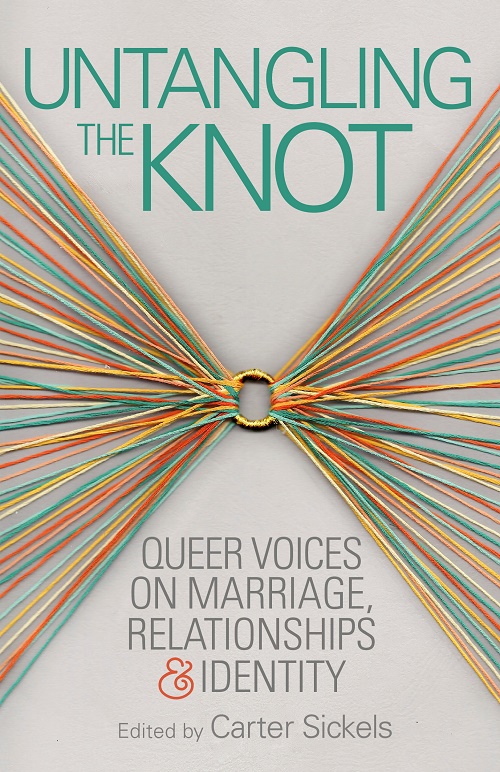Each project that we take on at Ooligan Press is uniquely challenging to its student workers. At this very moment, students in the graduate program are dividing their attention between books on historical nonfiction, young adult fiction, and single- and multi-authored literary nonfiction in both long and short forms. Because Ooligan is staffed by graduate students who are in and out of the publishing house in a short two years or less, most of us don’t end up working on books of the same genre twice. That means most of us working with the edits for Untangling the Knot: Queer Voices on Marriage, Relationships & Identity were confronted with the new challenge of editing a varied collection of twenty-six distinct voices into one cohesive anthology.
What we’ve come to learn is this is a fine line to walk—maintaining a singular theme and vision while simultaneously staying true to the particular vision of each individual author. It was made all the more challenging by the fact that Ooligan’s managers usually serve during their last year in the publishing program, meaning this project had two different managers. Despite their common goal of creating the best book possible for Ooligan, it is impossible that they would have the exact same vision for the book, and it’s easy for the wires to get a little crossed. Especially considering that the managers in this case must ultimately adhere to the wishes of the book’s editor, Carter Sickels, who also has a different perspective and a different vision for what the book will become.
Untangling the Knot is an anthology that we requested and accepted new submissions for a little over a year ago. It confronts the idea that gay marriage may not be the end of the equality debate in America, and it was originally supposed to approach this topic with a more academic sensibility, exploring the hard facts behind the marriage debate and the reality of what acceptance in America really looks like right now. While some of the admissions initially adhered to this idea, there were not enough of them to fill a book, and a second round of submissions and a broader approach yielded a batch of essays with a more personal tone and less scholastic rigor. This meant that pieces that had been accepted earlier needed to be revised for the more informal direction the book would end up taking, which is where the challenge, made even more difficult by the simultaneous turnover in project managers, really comes in.
One of these pieces vexed us right up through copyediting—it was a pivotal piece, essential to the ultimate goal of the text and chock-full of important facts and information. It was, however, loaded with lengthy citations and formal language. Ultimately, multiple rounds of editing were required to humanize the piece, to make it warmer and softer around the edges. Again, it was a fine line to tread to maintain the author’s perspective, convey all the right facts, and make it more approachable for the shifted marketing demographic. Authors provide well-meaning opposition given the threat they believe that we as editors pose to their babies, and this is the case for single-authored novels or nonfiction pieces as well. However, multiplying that struggle twenty-six times, trying to make twenty-six pieces into one, is bound to create conflicts even unlike those facing us when we crafted We Belong in History, an anthology of poetry by teenagers. The important thing is that each author is ultimately satisfied with their contribution, but now, thanks to the edits and to Carter Sickel’s skillful compilation, the book has a natural flow and progression, from the introduction to the final piece.
In addition to the thematic difference, there were conflicts of uniformity in the technical and grammatical edits we did. And even though those are less of a strain to deal with, they still hinder the production of the book, threaten the anthology’s internal consistency, and strain the editors. Given that we are working with twenty-six extremely intelligent, opinionated authors who not only have an idea for how their pieces should feel and flow, but also how they should look, they needed to be consulted for each and every edit, down to the last altered comma. It’s almost impossible to say whose styles should be altered, whose vision should be sacrificed, in the name of the Ooligan appearance and in the name of appealing Ooligan design, and our ultimate goal is to maintain as much of the authors’ original flair as we possibly can.
At this point, all the anthology pieces are finished with editing and only proofreading remains. We’re certain that following the book’s design, everything will come together just as seamlessly as any other Ooligan title, and Untangling the Knot will be another beautiful release.

